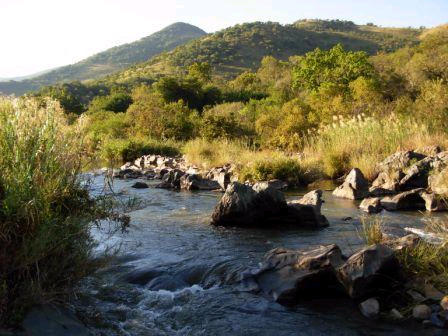Minimal Environmental Impact
24.06.2008 The DiT drilling team and geologists are working closely with the Mpumalanga Tourism and Parks Agency (MTPA) to ensure fulfillment of our scientific goals without compromising a zero to minimal environmental impact both during and after drilling. The compact drill rig and carefully contained working area will ensure minimal environmental impact.
Main content
Water is essential for the drilling operation to reduce friction at depth and to cool the drill bit. A small volume of water will be pumped locally from the Komati river and will then be continuously recycled on site. All fluids are contained within plastic lined ponds and to ensure no contamination of the geochemical signatures we are seeking in these rocks, no oil based drilling fluids will be used.
On completion of the drilling any natural rock flour and sludge remaining in the ponds will be removed along with the plastic liners. The drill holes will be capped and sealed. The top soil dug out to make the ponds will be replaced and leveled off. Within two rainy seasons there will be no permanent visible sign of where the drilling took place. Only with GPS co-ordinates will it be possible to precisely locate the original drill sites.
Whilst drilling is under way on our first hole a crew of local workmen are constructing an access track to our second drill site. This lies further along the river flood plane but this is blocked in a few places by small rocky outcrops.
In consultation with the Park rangers it has been decided to build a temporary gravel bridge over these so that the drill rig can be towed into the second field site. This temporary bridge will later be washed away by natural floods along the Komati river. We will of course be watching out for crocs and hippos in the river, sharing a bath with them is not recommended!
Photo: the Komati river.
Photo credit: Nicola Mcloughlin
